Everyone who followed IMANI’s exchanges with the Electoral Commission in 2020 carefully would have noticed that IMANI was against the compilation of a new electoral register for one major reason: shady procurement and waste of resources.
Over the years, some partisan fanatics have tried to make it look as if IMANI was merely a crying wolf. Very few have actually looked at the substance of IMANI’s case, which was mainly that Ghana’s biometric voting management system (BVMS) had cost the nation tens of millions of dollars to put together, was still in good shape, and needed only minor maintenance to be fit for the purpose of running the 2020 elections.
The Electoral Commission did everything it could to twist the facts, hide information, and outright lie to justify its decision to jettison the existing BVMS so that it could procure a brand-new one.
A few days ago, our colleague, Bright Simons, who continues to monitor the EC closely discovered that the EC had been sneaking out biometric devices that are core components of the BVMS to recycling companies without any public notice. His checks showed that these actions had never come up for discussion during the Inter-Party Advisory Committee (IPAC) meetings, through which the EC engages with its political stakeholders. He also discovered that the EC never opened any public tenders for these sales of sensitive equipment to recyclers.
Worst of all, he discovered through painstaking checks that the recycling companies engaged for the exercises do not have the strict certifications for secure data destruction that is required when disposing of sensitive equipment like this.
IMANI have since done our checks and we are shocked at the EC’s recklessness. It is universally known that wiping off data from electronic devices does not permanently erase them. Hence, disposal of electronic equipment containing sensitive traces of personal data, voter information no less, requires extremely thorough protocols that only a few specialised recycling companies, properly so certified, can handle.
But we were not prepared for the sheer mendacity, audacity, and shamelessness of the EC’s response to our colleague. The EC’s press statement was full of lies, half-truths, and pure fantasies.
- The EC says that only 10 biometric verification devices (BVDs) were “auctioned”. And that they “found their way” into a recycling plant. The obvious questions that the media ought to ask are a) before the EC jettisoned the existing system, it had told Parliament that it had implemented a “2 BVDs per polling station” policy and therefore had more than 70,000 BVDs in stock. Then in 2020, it proceeded to buy a brand new set of biometric voter registration (BVR) kits with corresponding BVD kits and swore (despite video evidence collected by Bright Simons) that they never used any of the pre-existing devices in the 2020 mass voter registration exercise. Why then did they auction only 10 out of the over 70,000 devices? Why “10”, and not 5, 100, or 1000? How have the remaining tens of thousands of devices been disposed of? Ghanaians who have been paying attention to the EC’s strange conduct under the current leadership know that the EC admitted to have lost some BVRs recently, but when pushed it insisted that they were only five in number. There is a clear pattern here. What exactly is going on?
- The EC claims that the 10 BVDs were auctioned, and that they just somehow then found their way into a recycling plant. Who were the auctioneers? Are they registered auctioneers licensed to conduct auctions by the Auctioneers Registration Board? Who were the successful bidders? How was the auction advertised? Why would anyone want to buy 10 used biometric devices that the EC claims has been “hard-coded” for electoral purposes, for which reason it has refused to use the thousands of devices bought in recent years? Why would a commercial recycling plant be interested in just 10 devices? Who authorised the recycling of the devices in a facility without adequate secure data handling capabilities?
- How does the EC reconcile the claim of just 10 devices with the thousands of identical devices captured in the photographic evidence shared by our colleague (see appendix)?
- The EC claims that it decided to buy fresh equipment because refurbishing the old devices would have cost more than buying a new set. Yet, it did refurbish the devices ahead of the 2019 electoral exercises. IMANI has evidence of payments to the previous broker of these machines, STL (see appendix). That exercise did not cost the tens of millions of dollars the EC claims.
- The EC definitely lied about the costs of refurbishment because it has absolutely NO evidence to show that the original makers of the equipment, HSB, and the software provider, Genkey, provided them with invoices or any quotations backing up these fantastical claims that refurbishment would have cost more than fresh procurement. IMANI painstakingly checked, and found out that refurbishment would have cost less than 10% of what the EC spent because many of the devices were barely two years old and had been used only once.
- The EC has consistently lied about the “obsolescence” of the biometric infrastructure that they came to meet and which they spent precious money to augment. IMANI has time and again provided detailed information from Parliament, the Ministry of Finance, and the Auditor General to show that the bulk of equipment in use as of 2020 when the EC decided to launch fresh procurement was bought in 2016 and 2018 (see appendix). As late as 2019, the EC was refurbishing this equipment for use in the 2019 December referendum that was eventually cancelled. In fact, the EC successfully held the referendum for the new regions in December 2018 and the 2019 District Assembly elections without a glitch using the same equipment that they will later claim to be obsolete. We have included an appendix below containing snapshots of evidence debunking the EC’s “obsolescence” claims.
- The EC disputes our colleague’s claims of amounts spent on the biometric voting system as well as previous figures provided by IMANI. Yet, in their tabulation of costs, they barefacedly refused to include the costs of new software, licenses and upgrades; the new VSAT systems procured to sync with the new datacenter; the software shadily procured from Neurotechnology of Lithuania; and the cost of consulting, installation, and logistics etc. In estimating the cost of the EC’s decision to jettison the existing system for the new one that it rigged public procurement processes to acquire, IMANI has always made it clear that it is accounting for total cost of ownership. It is thus monstrously deceitful for the EC to list the costs of just the devices, as if by their decision to jettison the existing system the only resulting costs to the nation are limited to the new devices procured.
- The EC has never properly addressed IMANI’s research into this issue for four years now. Their sudden pretence of accountability is thus entirely hypocritical. IMANI has used and presented evidence from the Auditor General and the EC’s own submissions to Parliament(see appendix). Never once has the EC tackled the overwhelming weight of evidence presented. Even when the Chairperson of the tender committee of the EC resigned from his duties in order not to rubberstamp what was clear bid-rigging in favour of Thales, the supplier of the EC’s new system, the EC refused to acknowledge the depths of impropriety it has sunk.
It has become clear that the EC, in its current shape and form, is pathologically misgoverned and cannot be expected to uphold any serious public service standards. It no longer has the DNA to conform to its ethical obligations. Unless and until a total overhaul of the culture in the leadership ranks of the EC occurs, it is frankly fruitless to expect any accountability from it. But in due course, that accountability will come.
Appendices
- EC’s Press Statement: https://citinewsroom.com/wp-content/uploads/2024/04/FACT-CHECKING-PROCUREMENT-OF-BVDS-AND-BVRS-BY-THE-ELECTORAL-COMMISSION-IN-2020.pdf
- EC’s half-truth tabulation of costs associated with the newly procured biometric voting management system (BVMS). The EC carefully omits many ancillary costs, such as new software, consulting, logistics, VSATs etc., which were all part of the process to jettison the old system.
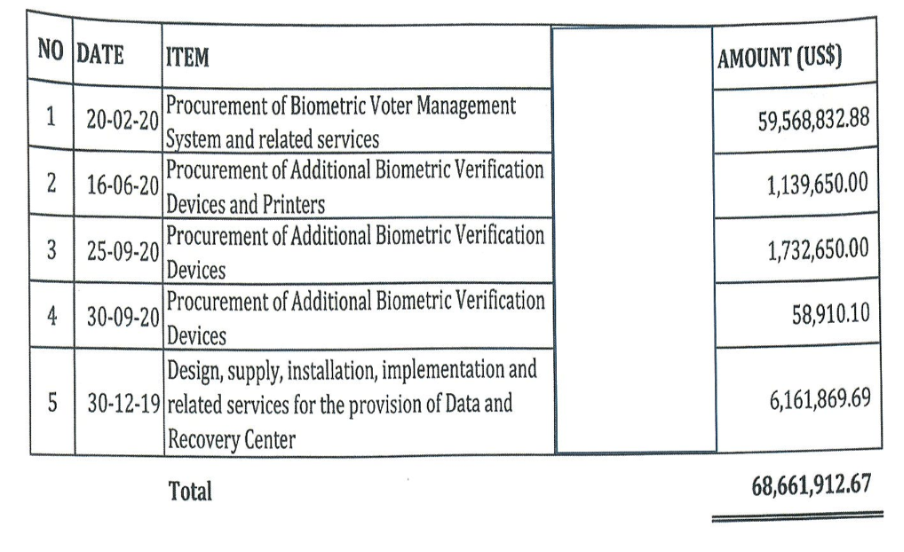
3. This article by Bright Simons provides video evidence of some old equipment in use and debunks claims that the new system procured by the EC can verify voters using facial biometrics as claimed: https://brightsimons.com/2020/07/10/the-sins-of-ghanas-ec/
4. EC’s shady procurement and big-rigging saga: https://imaniafrica.org/wp-content/uploads/2020/02/IMANI_EC_Dangerous_Games_February_2020-FINALISED-copy.pdf
5. This IMANI brief catalogs a list of issues, from inflated software contracts with a Lithuanian technology company to deceitful EC conduct in retaining STL as a paid contractor to continue servicing equipment it claimed were discarded, even as it bastardised the company in the press: https://imaniafrica.org/2020/11/imani-alert-the-fake-transparency-of-the-electoral-commission/
6. This is an extract from a press kit (https://media.peacefmonline.com/docs/202001/23107833_84075.pdf) widely released to the media by the EC in 2020, in which it blatantly lies that all the biometric equipment in use were bought in 2011:
Everyone who followed IMANI’s exchanges with the Electoral Commission in 2020 carefully would have noticed that IMANI was against the compilation of a new electoral register for one major reason: shady procurement and waste of resources.Over the years, some partisan fanatics have tried to make it look as if IMANI was merely a crying wolf. Very few have actually looked at the substance of IMANI’s case, which was mainly that Ghana’s biometric voting management system (BVMS) had cost the nation tens of millions of dollars to put together, was still in good shape, and needed only minor maintenance to be fit for the purpose of running the 2020 elections.The Electoral Commission did everything it could to twist the facts, hide information, and outright lie to justify its decision to jettison the existing BVMS so that it could procure a brand-new one.A few days ago, our colleague, Bright Simons, who continues to monitor the EC closely discovered that the EC had been sneaking out biometric devices that are core components of the BVMS to recycling companies without any public notice. His checks showed that these actions had never come up for discussion during the Inter-Party Advisory Committee (IPAC) meetings, through which the EC engages with its political stakeholders. He also discovered that the EC never opened any public tenders for these sales of sensitive equipment to recyclers.Worst of all, he discovered through painstaking checks that the recycling companies engaged for the exercises do not have the strict certifications for secure data destruction that is required when disposing of sensitive equipment like this.
IMANI have since done our checks and we are shocked at the EC’s recklessness. It is universally known that wiping off data from electronic devices does not permanently erase them. Hence, disposal of electronic equipment containing sensitive traces of personal data, voter information no less, requires extremely thorough protocols that only a few specialised recycling companies, properly so certified, can handle.But we were not prepared for the sheer mendacity, audacity, and shamelessness of the EC’s response to our colleague. The EC’s press statement was full of lies, half-truths, and pure fantasies.
- EC’s Press Statement: https://citinewsroom.com/wp-content/uploads/2024/04/FACT-CHECKING-PROCUREMENT-OF-BVDS-AND-BVRS-BY-THE-ELECTORAL-COMMISSION-IN-2020.pdfEC’s half-truth tabulation of costs associated with the newly procured biometric voting management system (BVMS). The EC carefully omits many ancillary costs, such as new software, consulting, logistics, VSATs etc., which were all part of the process to jettison the old system.

3. This article by Bright Simons provides video evidence of some old equipment in use and debunks claims that the new system procured by the EC can verify voters using facial biometrics as claimed: https://brightsimons.com/2020/07/10/the-sins-of-ghanas-ec/4. EC’s shady procurement and big-rigging saga: https://imaniafrica.org/wp-content/uploads/2020/02/IMANI_EC_Dangerous_Games_February_2020-FINALISED-copy.pdf5. This IMANI brief catalogs a list of issues, from inflated software contracts with a Lithuanian technology company to deceitful EC conduct in retaining STL as a paid contractor to continue servicing equipment it claimed were discarded, even as it bastardised the company in the press: https://imaniafrica.org/2020/11/imani-alert-the-fake-transparency-of-the-electoral-commission/6. This is an extract from a press kit (https://media.peacefmonline.com/docs/202001/23107833_84075.pdf) widely released to the media by the EC in 2020, in which it blatantly lies that all the biometric equipment in use were bought in 2011:
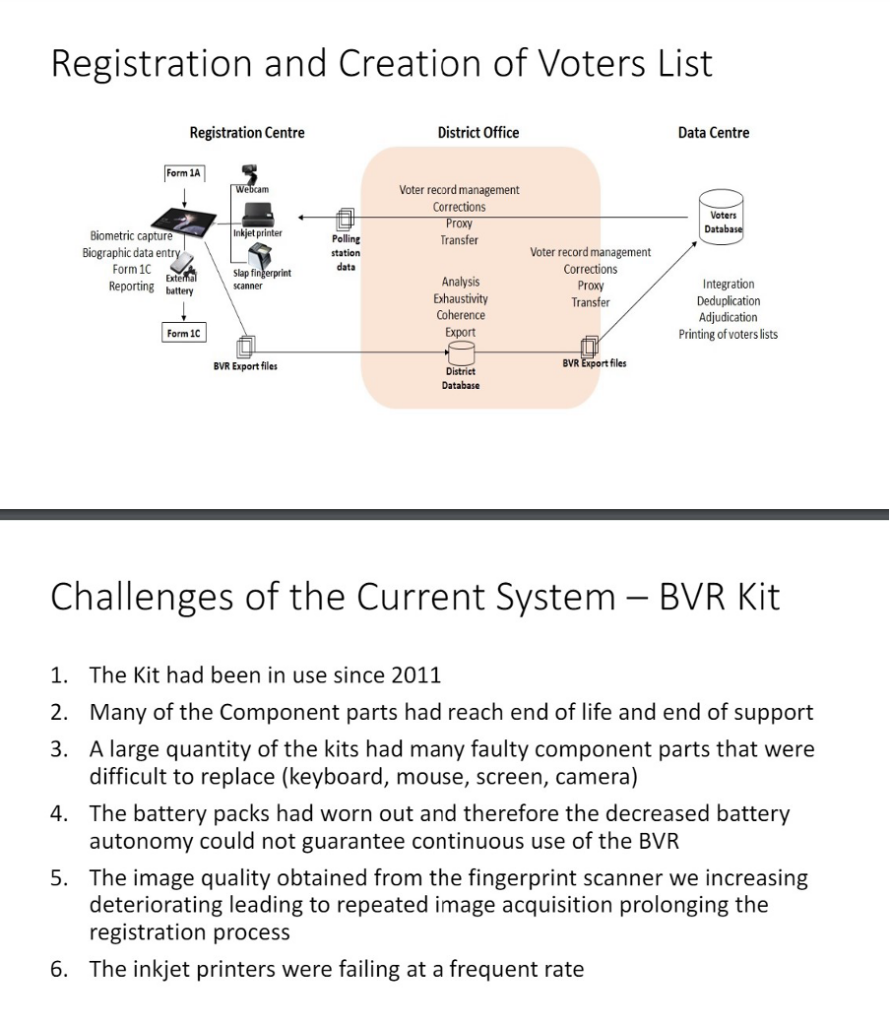
7. Here are pictures of mounds of biometric devices that cast serious doubts on the EC’s claims that it only auctioned 10 BVDs:
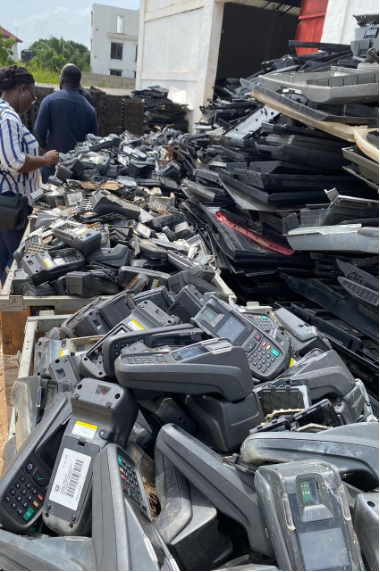

8. Here are snapshots of evidence from official parliamentary, Auditor General, and Ministry of Finance documents, some prepared and submitted by the EC itself, conclusively debunking the assertion that all its equipment, as of 2020, was procured in 201l.A.

B.
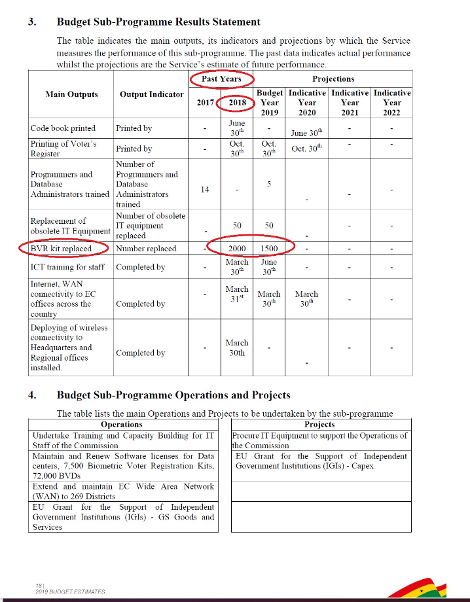
C.
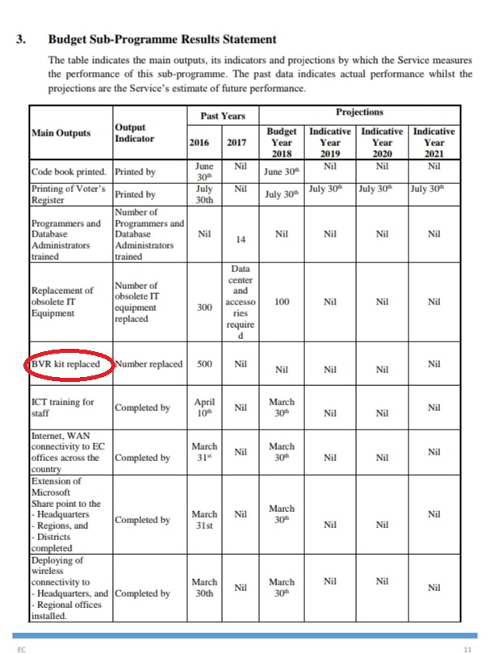
D.
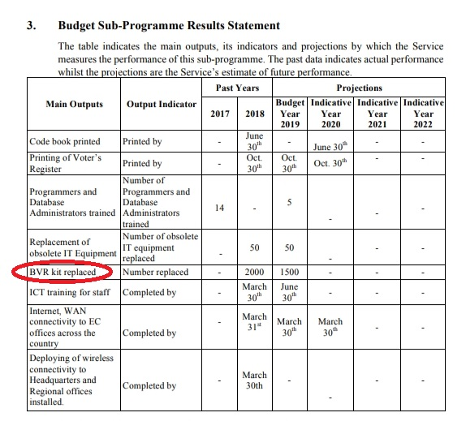
E.



